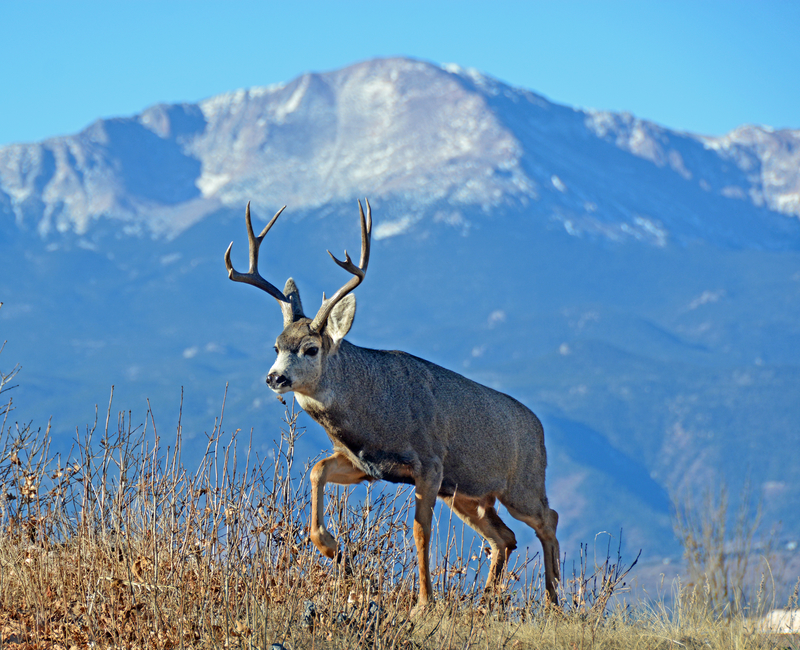Like every other living creature, deer have different personalities, preferences, and habits.
Understanding them is the best way to ensure you can bag your quarry in the least amount of time (and in some cases avoid miles long transporting of the meat to your vehicle.)
The Roamer
His M.O.:
This buck will show up one day on all of your cameras at once. Odds are he’ll be cruising through quickly, following a doe, and you’ll only capture fleeting photos of him. Then he’ll disappear for a day or two, and your buddy a couple farms away will have him on his cameras.
Profile:
Some bucks shift ranges during the fall (we’ll get to that later), but many others go on what wildlife researchers call “excursions.” These are often short (less than 24 hours) walkabouts in which the bucks leave their usual range, likely in search of estrous does.
“Two recent studies in which researchers were following collared bucks showed this tendency,” says Brian Murphy, CEO of the Quality Deer Management Association. “A study of 15 collared bucks in Maryland found that 58 percent of them roamed during the rut. Another study of 16 collared bucks in Texas found that all the bucks went on excursions. Some of these bucks went 8 or more miles in a 24-hour period.”
In one interesting example, University of Tennessee whitetail researcher Ryan Basinger recorded the first breeding between a wild collared buck and wild collared doe on November 19, 2010. The buck and doe stayed together for just 12 hours, and both deer had actually left their normal home ranges. GPS data showed the buck left his range and found the doe at 9 a.m.
They moved off and stayed in cover all day, likely breeding during this time. By 9 p.m. that evening, the buck was off cruising again.These excursions can make even old, smart bucks vulnerable during the intense search phases of the rut—before the peak, when only a few does are in estrus, and after the peak, when only a few does are still in heat—as they move through unfamiliar areas.
The best stand location to waylay such a buck is a rut ¬funnel—an obvious travel route between bedding areas. Look for power-line rights-of-way, cover between agriculture fields, thick river bottoms that connect woodlots, or pinch points between bodies of water.
The Shifter
His M.O.:
You’ll have this buck on camera regularly early in the season, then he’ll disappear when hunting pressure increases. If you keep records of your photos, you’ll notice that this happens with the same buck year after year.
Profile:
Biologists don’t yet know what percentage of bucks relocate from a summer to a fall range, but some certainly do. Dr. Karl Miller, a renowned deer researcher with the University of Georgia, guesses that “maybe 10 percent of bucks relocate,” but many more bucks shift around within their home range as they look for estrous does. Miller points to research done in Pennsylvania by one of his students as a prime example.
For the study, researcher Andy Olson mapped a buck’s movements (via GPS) and found him shifting from one part of his mountainous home range to another in each week of November.
“Clearly the areas of his home range that he used on a weekly basis shifted through the rut,” Miller says.
All of this, of course, is also influenced by hunting pressure. Murphy explains that a study in hunting pressure on a 4,600-acre Oklahoma property found that when there was one hunter per 250 acres, buck movement during daylight wasn’t affected much, but when there was one hunter per 75 acres, daytime observations of bucks declined to near zero. Importantly, this change in buck behavior occurred just three days after the hunting pressure turned on.
The takeaway? Minimize hunting pressure on your property, or target public-land spots where other hunters aren’t willing to go. You’ll see more bucks during daylight, and you’ll also have wary old bucks move into your hunting area as the season progresses.
Unfortunately for hunters, deer do not all behave the same way; you have to observe them and adapt your hunting strategies and tactics to fit their personalities.
To do that, though, you have to understand how to recognize their behavior for what it is.
To see other types of deer personalities, check out Outdoor Life.
